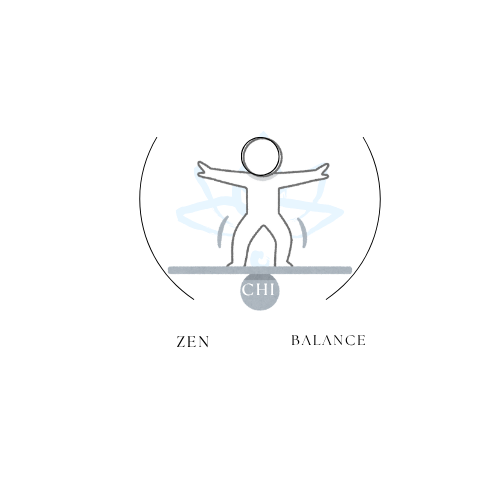
Mindfulness in Motion Everyday Cues for Calm Attention
Share
Updated on: 2025-10-20
Table of contents for mindfulness and present-moment awareness
- Mindfulness fundamentals for calm, present-moment awareness
- Practical guide to mindfulness and present-moment awareness
- Key advantages of mindfulness in daily life
- Summary and next steps for mindful awareness
- Mindfulness questions and answers
Mindfulness fundamentals for calm, present-moment awareness
Mindfulness is a simple, humane way to notice experience with kind curiosity. In everyday terms, it is the skill of returning to present-moment awareness and meeting whatever you find with mindful awareness. Many people explore mindfulness through gentle meditation and short pauses woven into their day. These practices are often appreciated for their supportive role in clarity, steadiness, and stress reduction, especially when life feels full.
There is no need to strive or perform. Mindfulness grows through small, repeatable moments of noticing: the feeling of the breath, the sound of a kettle, the sensation of your feet on the floor. Over time, these moments can help you respond with care rather than react on autopilot. If you are new, you might start with one to three minutes and allow the habit to build gradually.
Practical guide to mindfulness and present-moment awareness
The steps below are designed to be flexible. You may complete them as a short seated meditation or as brief check-ins throughout the day. Please move at a pace that feels comfortable.
Set a gentle intention
Intentions give shape to your practice without adding pressure. Consider a phrase such as “Today, I will return to the present when I notice I have drifted.” This sets a friendly tone and invites mindful awareness without judgment.
- Choose a simple phrase that feels supportive.
- Place a small reminder where you will see it, like a note near your desk or a phone wallpaper.
- Allow your intention to be flexible; it can change as your day unfolds.
Follow the breath with mindful awareness
Breath-focused meditation is an accessible way to cultivate mindfulness. Sit or stand in a posture that feels steady. If comfortable, soften your gaze or close your eyes. Notice the natural rhythm of your breathing—perhaps the cool air at the nose or the rise and fall of your chest.
- Gently count four breaths, then start again.
- When the mind wanders, acknowledge it kindly and return to the next inhale.
- Practice for one to five minutes, or longer if it feels useful.
There is no right or wrong experience here. The act of returning is the practice. Each return strengthens the habit of present-moment awareness in a small, steady way.
Anchor with the five senses
Sensory anchors help bring attention into the body and the environment. This can be a helpful complement to breath-based meditation, especially on days with many thoughts.
- See: Gently scan the colors and shapes around you.
- Hear: Notice near and far sounds without trying to change them.
- Feel: Sense the temperature of the air or the contact points of your body.
- Smell/Taste: Briefly note any scents or lingering tastes.
Move through these senses at a relaxed pace. Even sixty seconds can support mindful awareness and offer a grounded pause.
How to practice mindfulness at work
Workdays can be busy, so it helps to keep practices brief and discreet. The aim is to build a rhythm of short resets that fit your schedule.
- One-minute reset: Before opening email, take ten calm breaths and notice your posture.
- Mindful transitions: As you switch tasks, name your next action out loud or silently. This can reduce mental clutter and support clarity.
- Micro-breaks: Every hour, stand up, stretch your hands, and look at a distant object to relax your eyes.
- Grounding with touch: Lightly press your feet into the floor during video calls to anchor attention.
These small practices are intended to support focus and steadiness. If you miss a check-in, no problem. Simply begin again when you remember.
Mindfulness exercises for anxiety: the 3-2-1 grounding
When the mind feels busy, this gentle exercise can help you orient to the present moment.
- Notice 3 things you can see. Name them softly.
- Notice 2 things you can feel in the body (for example, your hands or the chair).
- Notice 1 slow, comfortable breath.
Move through the steps at a comfortable pace. Many people find this brings attention back to immediate experience in a kind, steady way.
Close with kindness and reflection
End your practice with a brief check-in. You might place a hand over your heart or rest your hands on your lap. Thank yourself for showing up. Consider one gentle sentence to carry forward, such as “I can return to the present at any time.”
- Jot a quick note about what supported focus today.
- Set a reminder for your next brief practice.
- Share your intention with a trusted friend if that feels supportive.
Key advantages of mindfulness in daily life
- Support for attention and clarity: Brief pauses can make it easier to notice what matters in the moment.
- Helpful space before responding: Mindfulness may create a small gap between stimulus and action, allowing more thoughtful choices.
- Gentle support for stress reduction: Many people report a steadier mood when they include short practices in their day.
- Greater body awareness: Tuning into sensations can help you recognize early signs of tiredness or overload.
- Accessible anywhere: Mindfulness practices can be as short as one minute and do not require special equipment.
- Works alongside existing habits: You can pair mindful moments with routine activities such as brewing tea, walking, or tidying a workspace.
Summary and next steps for mindful awareness
Mindfulness is a gentle practice of present-moment awareness that you can tailor to your day. A short intention, a minute of breathing, and brief sensory check-ins are often enough to begin. Over time, these small returns to the present can support steadiness, focus, and more compassionate self-talk.
If you would like to continue, you might choose a single practice and repeat it at the same time each day. You could also explore a simple meditation timer or share your intention with a colleague to build friendly accountability. If it helps, consider bookmarking resources you trust and returning to them when you need a refresher.
For further reading and gentle guidance, you may find these pages helpful:
Mindfulness questions and answers
What is mindfulness and how do I practice it?
Mindfulness is a friendly awareness of the present moment. Practicing it can be as simple as pausing to notice your breath or the sensations in your feet. Start small—one to three minutes works well for many people. Choose a single anchor (breath, sound, or touch), and when your attention wanders, kindly return to that anchor. The return is the practice. Over time, this builds a steadier habit of mindful awareness that you can carry into daily activities.
How does mindfulness help reduce stress and anxiety?
Mindfulness may support stress reduction by helping you notice early signs of tension and by creating a brief pause before reacting. Short practices—like slow breathing or a 3-2-1 grounding—can shift attention toward immediate sensations, which many people find calming. While experiences vary, these gentle check-ins often make it easier to respond thoughtfully to challenging moments.
How can I practice mindfulness at work without extra time?
Integrating mindfulness at work can be brief and discreet. Try a one-minute breathing pause before opening messages, name your next task to support clarity, or stand and stretch during natural breaks. You can also anchor attention during meetings by feeling your feet on the floor or the contact of your hands. These micro-practices take little time and can fit smoothly into your schedule.
Is meditation the same as mindfulness?
Meditation is one way to practice mindfulness, but mindfulness can also be woven into ordinary activities. You can bring mindful awareness to walking, washing dishes, or pausing between tasks. Seated meditation offers a dedicated space to practice returning attention, while daily-life moments help you carry that skill into varied situations.

I'm a passionate curator at Zen Chi Balance, dedicated to spreading calm, harmony, and mindful living through faith-inspired lifestyle products. I help craft meaningful experiences for our global community of mindful shoppers.
The content provided is for informational and inspirational purposes only. It is intended to encourage personal growth, mindfulness, and balance in daily life. Zen Chi Balance does not provide medical, legal, or professional advice. For specific concerns or guidance, please consult a qualified professional. Visit us at www.zenchibalance.com for more inspiration and resources.
